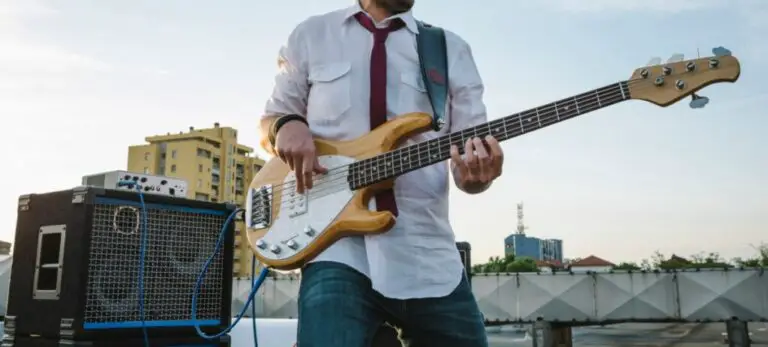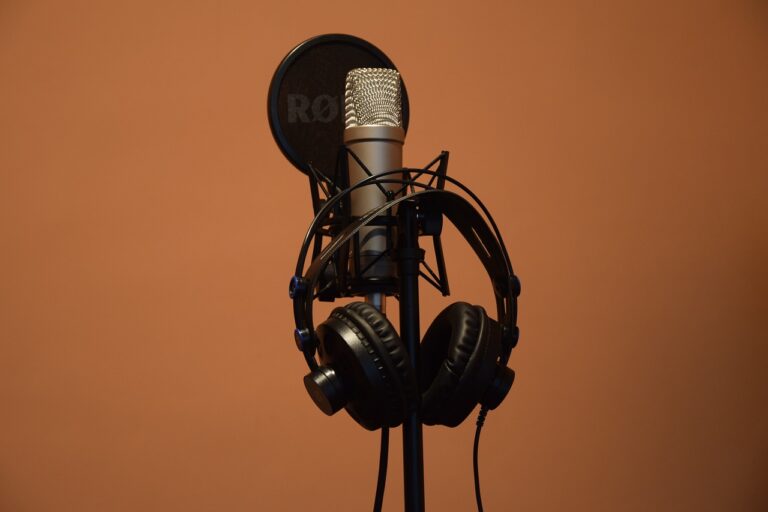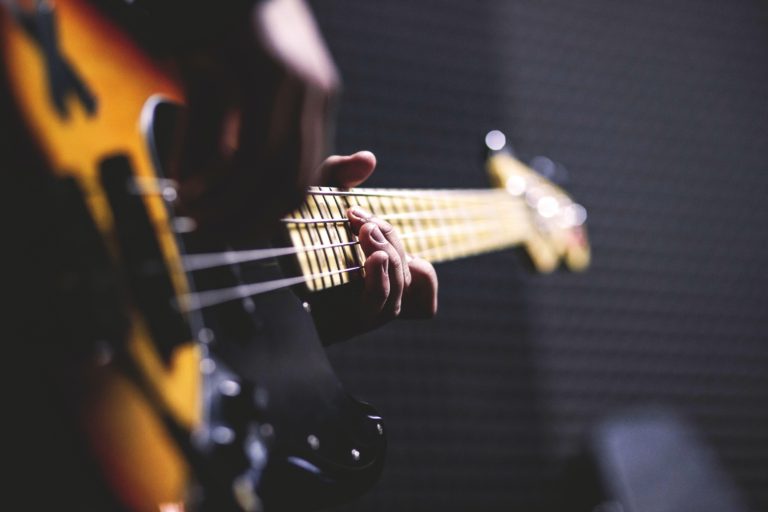Drum Machine vs Sampler: Are They the Same?
When it comes to choosing a drum machine vs a sampler, it’s not always an easy choice. It’s a big call to make as it defines how your song will develop.
But what is the difference between the two devices?
In the battle between a drum machine vs a sampler, the drum machine uses pre-produced beats to build a percussive later, whereas a sampler interweaves layers of music to develop a song.
Both machines are core staples for modern music producers. They are tools used in creating songs across every genre, whether rap, rock, or pop.
However, the purpose of both machines differs in various ways meaning artists need to understand how both devices vary. So how do you choose between a sampler and a drum machine?
Sampler vs Drum Machine: What Do They Do?
Over the past few decades, drum machines and samplers have become key tools for making music across the industry. You’ll find them used in many big hits no matter what genre you look into.
Popular for both artists and producers, both machines produce huge results with various tools on display. So what does each device do?
What is a Drum Machine?
Whenever you hear electronic beats driving a song, there’s a good chance it comes from a drum machine. Drum machines are a quick and easy way to lay down a percussion section without using live instruments.
Without using a live kit, a drum machine digitally recreates any percussive sound needed by an artist or a producer. All these sounds are preloaded into the device, captured by live instruments in a studio setting.
Like synthesizers, you can choose between a digital or analog drum machine. If you want a more “classic drum machine,” you’ll choose its analog form, which relies on hardware circuits to create sounds. If you want perfect sound, you’ll use a digital drum machine.
The electronics within a drum machine allow users to program whatever they need to create the desired rhythm. Alongside covering many drum sounds, the device comes with different effects.
These effects can manipulate sounds in many ways, giving you as simple or complicated a rhythm as you want. This lays down your rhythmic basics to work off on a composition.
Pros of Drum Machines:
- Consistency: Provides a consistent rhythmic backbone, perfect for genres that require a steady beat.
- Portability: Generally compact and easier to transport than a full drum kit.
- Flexibility: Many drum machines allow tweaking drum sounds, including pitch, decay, and tone.
- Integrated Sequencing: Most drum machines have built-in sequencers, allowing users to craft full rhythm sections.
Cons of Drum Machines:
- Limited Sound Palette: While versatile, drum machines have a more limited range of sounds than samplers.
- Lack of Human Feel: Without proper programming, drum machines can sound robotic or too “perfect,” lacking the nuances of a live drummer.
- Learning Curve: Like samplers, mastering the features and functionalities of a drum machine can be daunting for beginners.
What is a Sampler?
What makes samplers stand out from other music tech is their ability to capture and manipulate live sounds. Samplers catch audio snippets and save that section for users to alter.
What causes them to be confused with drum machines is that you can gather drum samples. When you play drum beats using a machine, it’s easy to call that a drum machine. When it’s built for more than drums, that’s your sign it might be a sampler.
The great thing about samplers is they are designed to work across multiple layers. This means you can capture multiple snippets and combine them within one piece.
As you capture more sounds and layers, it gives you a better chance to manipulate them and turn them into new music.
Samplers allow the user to cut, loop, and reverse sounds to the nth degree to the perfection of creating a new sound or melody. This gives songs a hook or melody that can’t be replicated with live instrumentation.
Pros of Samplers:
- Versatility: Can reproduce various sounds, from vocals to instruments to ambient noise.
- Creativity: By manipulating samples, users can craft unique sounds and textures that might be difficult or impossible to recreate otherwise.
- Space-Efficient: Instead of having multiple instruments, one sampler can hold countless instruments’ sounds.
- Time-Stretching and Pitch-Shifting: Many modern samplers allow for altering the speed and pitch of a sample independently.
Cons of Samplers:
- Learning Curve: Properly utilizing a sampler’s full potential can be complex and require time to master.
- Memory Limitations: Depending on the model and age of the sampler, there might be limitations on how much audio can be stored.
- Potential Legal Issues: Sampling copyrighted material without clearance can lead to legal troubles.
Drum Machine Vs Sampler: The Breakdown
Breaking down both devices can be tricky. Some even might class a drum machine as a type of sampler. However, both are unique devices that have their roles in song production. So how do you decide between using a drum machine vs a sampler?
Core Purpose
One of the biggest differences between the two is their overall purpose. This is perhaps where they differ the most.
When it comes to a drum machine, you are getting exactly that. A drum machine that gives you an electronically generated rhythm section. That’s the core and thrust of it. It’s a much more straight-edge purpose than a sampler.
Samplers are designed for working with multiple layers and tools. This means handling more than just a rhythm section. You could be working with vocals, multiple instruments, and bass lines. It means you can work on various sections within a song.
A great example of where samplers outshine drum machines is in a song by electronic music icons Daft Punk. In their 2001 song “Face To Face,” almost everything is built from samples. The recorded version uses over 70 samples to comprise the bass line and both vocal & instrumental hooks. Only the vocals in the song were original works in a studio—a showcase of how a sampler can be used to build and create a piece.
Main Uses
When it comes to actually using them, both machines thrive in different environments. It’s often a feature that helps musicians choose which device they will use for an occasion.
Drum machines are very much a tool designed for the studio. With their pre-programmed sounds and features, you can spend days tinkering in the studio to find your ideal rhythm.
There’s no shortage of sounds to explore – electric and live – and these can all be altered with various effects to get the desired rhythm.
It’s a similar platform with samplers in a studio. However, samplers are a device that can work just as well in a live setting.
For electronic artists, a sampler on stage is essential for a good show. Not only can they use it to manipulate pre-recorded sounds to form new mixes, but they can also do it live on stage.
It means they can capture a particular sound or effect in the show and manipulate it in real-time. The result is a new mix not heard before that can be rewarding for artists and fans at a concert.
It’s why some artists may start, and end shows with the same song.
During a co-tour in 2015, electronic DJs Porter Robinson and Madeon used this trick with their collaboration “Shelter.” Opening and closing with the song, the original co-version opened the set. However, their closing version reworked three other songs into the mix, with the opening riff re-looped and manipulated live on stage. An excellent showcase of how samplers can shine live on stage.
Music Types
You will find that both these instruments are used in multiple genres. Even genres where live instruments thrive will use samplers and drum machines now and again.
Drum machines are essential in almost any urban music scene. Hip-hop, R’n’B, and trap all base their core sound around a drum machine – sometimes very little else.
Surprisingly, even some rock bands will use a drum machine in their music. Nu-metal icons Linkin Park became known for mixing both live drums and electronic drum machines within their songs. The main intro to their hit single “Papercut” is generated from a drum machine, not their live drummer!
Samplers pop up everywhere in music. For many house, electronic, and trance musicians, a sampler is a key tool in their creative arsenal. It gives them the chance to create entirely new songs from nothing.
It’s increasingly becoming a tool for pop artists to create new hits. By sampling loops from yesteryear, it helps make new this with blends of the old and new.
Are There Similarities Between Drum Machines and Samplers?
Despite some differences, drum machines and samplers share a lot in common. Aside from being production tools, they share many of the same effects and features.
Using either device, you will find a raft of sound manipulators to create your ideal sounds. Some of these features include:
- Oscillators
- Modulators
- Filters
- Effects
These different tools provide the means to manipulate sound in any way possible. If you want to increase and play with tempos, that’s possible. Lower or raise layer volumes – again possible.
It’s a myriad toolkit that producers can use to digitally create new sounds and find a way to make their work unique.
They also provide a way to overcome any delays or issues in the production process. If you can’t find a way to get live musicians to lay down some rhythms or produce a melodic hook, these tools allow you to circumnavigate it.
This avoids unnecessary delays in the recording process and allows you to keep working on your next record – no matter how big or small.
Delivering a Final Verdict
The choice is generally pretty easy to make regarding the debate over a drum machine vs a sampler. If you want to lay down a beat in the studio, a drum machine is the best choice. Its vast selection of sounds and range of tools makes it the perfect way to build a foundation.
On the other hand, samplers are much better for anyone looking to give songs a unique identity. They can manipulate any sound to form a new melody or hook. They are also devices that can be used in a studio or live setting, making them an extremely versatile tool.
With both tools giving the toolsets needed to create music digitally, there’s plenty of room to use both devices and avoid taking sides in the drum machine vs sampler debate.
Drum Machine vs Sampler FAQs
What is the primary function of a drum machine?
A drum machine is an electronic device designed to emulate the sounds of drums, cymbals, and other percussion-based musical instruments to create drum tracks. They can come pre-loaded with various drum sounds and patterns, and users can program their beats or rhythms.
How does a sampler differ from a drum machine?
A sampler allows users to record or “sample” sounds from various sources and play them back, often with the ability to modify the pitch, speed, and other parameters. Unlike drum machines, which primarily focus on drum and percussion sounds, samplers can reproduce various sounds, from vocals to ambient noises. Still, you’ll find drum samples on a sampler.
Can I use a sampler as a drum machine?
Yes, many producers use samplers as drum machines by loading them with drum sounds. The advantage of this is the ability to have a unique drum sound and manipulate it further than a standard drum machine might allow. You can use either to create a drum pattern (a combination of notes to make something usable).
Do drum machines and samplers come with built-in effects?
Modern drum machines and samplers have built-in effects like reverb, delay, and EQ. This allows users to tweak and shape their sounds without needing external effects units.
Which is better for live performances: drum machine or sampler?
Both can be excellent for live performances, but the best choice depends on the musician’s needs. Drum machines are great for laying down consistent beats, especially in electronic or dance music. Samplers, on the other hand, offer versatility in triggering various sounds, making them suitable for experimental and varied genres.
Are there hybrid devices that combine both?
Yes, there are hybrid devices on the market that offer functionalities of both drum machines and samplers. These devices provide the rhythmic capabilities of drum machines and the sound manipulation features of samplers, giving users a comprehensive tool for music production.








